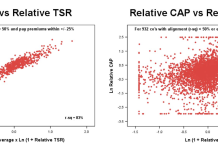The stability and dominance of the dollar is under threat. For years, the dollar has held a firm grip as the global currency, serving as the primary reserve currency and preferred medium of exchange for international transactions, but that might be changing
Recent trends and developments, most notably the Russia and Ukraine war and its consequences, indicate that the dominance of the dollar may encounter substantial obstacles.
This exclusive article examines the factors that contribute to the potential decline of the dominance of the dollar and explores the implications for the global financial system.
Challenging prospects ahead for the dominance of the dollar
The conflict in Ukraine has prompted the United States to take unprecedented measures in sanctioning the Russian economy, utilising the dollar as a strategic weapon.
These sanctions have had far-reaching implications, notably restricting Russian banks’ access to the SWIFT international payments system and freezing the assets of the Russian central bank.
As a result, Russian banks have faced challenges in facilitating global transactions, hindering their ability to engage in seamless international business. Additionally, the sanctions on Russian exports, including oil, gas, and other commodities, have impeded Russia’s ability to generate foreign exchange and sell its products.
Furthermore, restrictions on investment have created obstacles for Russia in attracting foreign capital and financing its economy. In response to these challenges, Russia has taken significant measures to reduce its dependence on the US dollar and diversify its currency usage.
One notable aspect of this shift is the gradual dominance of the dollar’s holdings in Russia’s foreign exchange reserves.
Over the years, the share of US dollars in Russia’s reserves has declined from 46% in 2014 to 20% in 2022. To compensate for this reduction, Russia has been increasing its holdings of other currencies, with the euro accounting for 40% of its foreign exchange reserves and the Chinese yuan accounting for 10%.
Moreover, Russia has actively promoted the use of alternative currencies in its trade activities. Instead of relying on the US dollar as an intermediary currency, Russia has been engaging in trade with other countries using their respective currencies.
For instance, Russia has been conducting oil and gas trade with China in yuan, bypassing the need for dollar transactions.
De-dollarisation: Russia’s shift towards diversification and new reserve currencies
This approach not only minimises exposure to potential US sanctions but also strengthens economic ties with trading partners. Additionally, Russia is exploring the development of its own digital currency, the digital ruble.
Introducing a digital ruble could offer Russia greater flexibility in facilitating international payments, enhancing the efficiency and security of cross-border transactions while reducing reliance on traditional payment systems denominated in the US dollar.
Amidst the Russia and Ukraine war, the Kremlin’s efforts to reduce dependence on the US dollar align with a broader trend of de-dollarization observed in several countries.
Various nations, including India, China, Saudi Arabia, and Iran, have also sought to de-dollarize their economies and promote the use of regional currencies.
These countries have explored settling energy trade in their own currencies or through bilateral agreements, effectively bypassing the dollar. Furthermore, the BRIC countries have explored the possibility of establishing a new reserve currency backed by a basket of their respective currencies.
This collective effort demonstrates their commitment to reducing reliance on the US dollar in the global financial system. The rise of the Chinese economy has particularly positioned the Chinese yuan as a potential contender to replace the dollar in international trade.
The establishment of the Cross-Border Interbank Payment System (CIPS) as a rival to the SWIFT international payments system enables the yuan to compete with the dollar as a preferred currency for international transactions.
Notably, the yuan has ascended to become the fifth-largest global reserve currency, according to the International Monetary Fund (IMF). As Russia and other countries actively pursue de-dollarization strategies, the influence of these efforts on the international stage may inspire more nations to follow suit.

An American decline? What are the implications for global economic power
As the dominance of the dollar declines amidst the Russia and Ukraine war, there would be a rebalancing of global economic power, with other currencies like the euro and the Chinese yuan gaining prominence, thus anticipating a more equitable distribution of economic influence and potentially reshaping the geopolitical landscape.
The collective desire to reduce reliance on the US dollar indicates a shift in the global economic landscape, potentially impacting trade dynamics, reserve holdings, and the overall balance of economic power.
This piece was written and provided by Reuben Hanson, an accomplished economist who holds a master’s degree from Newcastle University Business School, specialising in MSc International Economics and Finance.











